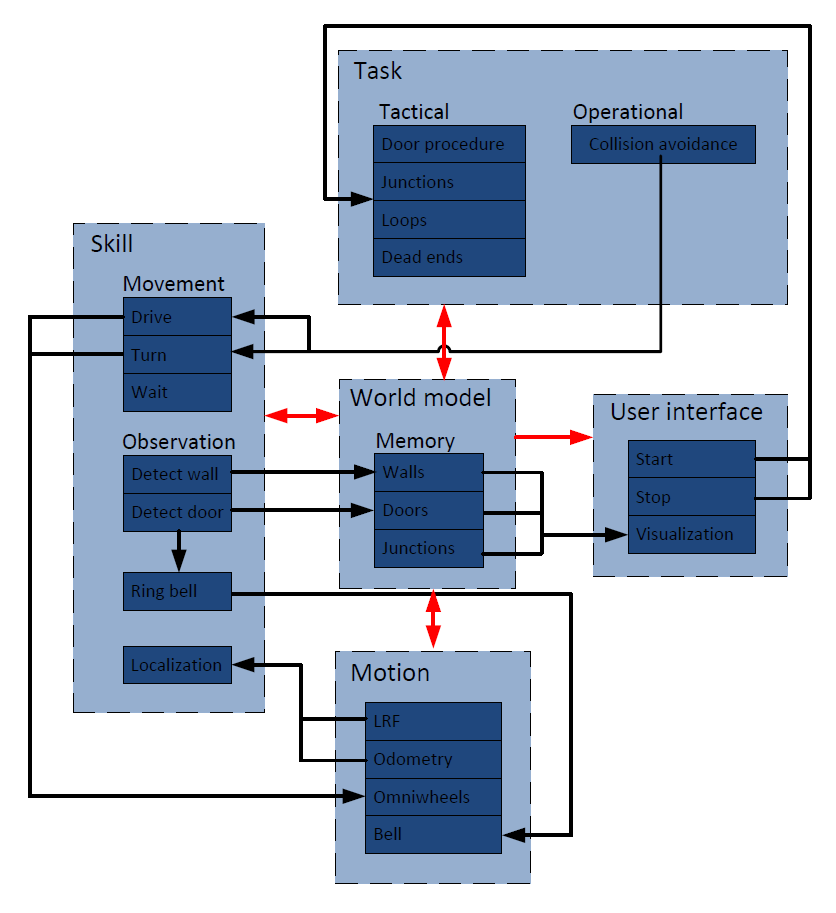Embedded Motion Control 2017 Group 6: Difference between revisions
No edit summary |
No edit summary |
||
| Line 6: | Line 6: | ||
! scope="col" | E-mail | ! scope="col" | E-mail | ||
|- | |- | ||
! scope="row" | Ties Hoenselaar | ! scope="row" | Ties Hoenselaar | 0857112 | t.a.h.hoenselaar@student.tue.nl | ||
|- | |- | ||
! scope="row" | Hasan Ilisu || 0852221 || h.h.ilisu@student.tue.nl | ! scope="row" | Hasan Ilisu || 0852221 || h.h.ilisu@student.tue.nl | ||
Revision as of 12:12, 19 May 2017
About the group
| Name | Student ID | |
|---|---|---|
| Ties Hoenselaar | 0857112 | t.a.h.hoenselaar@student.tue.nl | ||
| Hasan Ilisu | 0852221 | h.h.ilisu@student.tue.nl |
| Laura de Jong | 0743679 | l.s.d.jong@student.tue.nl |
| Lars Moormann | 0861223 | l.moormann@student.tue.nl |
| Bas Straatman | 0777325 | s.r.t.straatman@student.tue.nl |
| Jeroen van der Velden | 0744957 | j.r.v.d.velden@student.tue.nl |
| Student | ID number |
|---|---|
| Ties Hoenselaar | 0857112 |
| Hasan Ilisu | 0852221 |
| Laura de Jong | 0743679 |
| Lars Moormann | 0861223 |
| Bas Straatman | 0777325 |
| Jeroen van der Velden | 0744957 |
Tutor: Wouter Houtman
Initial Design
File:Initial design plan EMC group 6.pdf
Requirements
In order to achieve the goal, the following requirements have to be met:
- The robot has to drive through any maze complying with specifications
- It has to escape the maze within the time limit
- Collisions with the walls must be avoided
- Doors must be opened
- Doors must be recognized in order to achieve the previous requirement
- The software has to be robust for imperfections in the measurement data and disturbances
- The robot must not be idle for a long period of time
- The robot must not ring the bell too often
- The robot must autonomously solve and navigate through the maze
- The Software must be started with only one executable
Functions
The software must have the following functions in order to meet the requirements and fulfill the goal:
| Function: | Description |
|---|---|
| Drive forward | The robot must drive forward unless something, for
example a wall or a corner, is detected |
| Drive backward | The robot must drive a little bit backward if it is unable to rotate |
| Turn left | Make a 90degree left turn |
| Turn right | Make a 90degree right turn |
| Ring bell | The bell must be rang in order to open the door |
| Localize | The robot has to localize itself in the world model, because the
odometry data isn't that accurate |
| Wait | The robot must wait at a dead end in order to check if it is a
door |
Components
The following components will be used to reach the goal:
Sensors
- Laser range finder which uses a laser beam to determine the distance to an object
- Wheel encoders (odometry) to estimate the position of the robot relative to a starting location
Actuators
- Holonomic base with omni-wheels
- Bell to open the door
- Pan-tilt unit for head (which will not be used)
Computer
- Intel I7
- Ubuntu 14.04
Specifications
The goal and the requirements will be achieved with the following specifications:
Robot
- The maximum transnational speed of the robot is 0.5 m/s
- The maximum rotational speed equals 1.2 rad/s
- The corridor challenge has to be solved in 5 minutes
- The maze challenge has to be solved in 7 minutes
- Both challenges have a maximum of two trials
- The laser range finder (LRF) has a range of 270 degrees
- The wheel encoders have an unknown accuracy
- The robot must not be idle for more than 30 seconds
Maze
- The corners will be approximately 90 degrees
- The wall distance is 0.5-1.5 meter
- There is only 1 door in the maze
- The door starts opening in 2 seconds
- The door opens if the robot is within 1.3 meter of the door
- The door is open in 5 seconds
- The number of rings must not be larger than the number of potential doors
- The maze may contain loops
- The maze can contain dead ends
Interfaces

The main relations between the interfaces are colored red and can be described as follows:
World model -> Task:The world model can give information about taken paths to the Task
World model -> Skill:The stored observations in the world model are used for movement skills
World model -> Motion:The world model can give data to the actuators
World model -> User interface: The user interface needs the data from the world model to visualize the world model to the human
Task -> World model:The task needs to store information about paths in world model
Skill -> World model :The world model is build from observations
Motion -> World model :The motion can give sensor data about the position to the world model